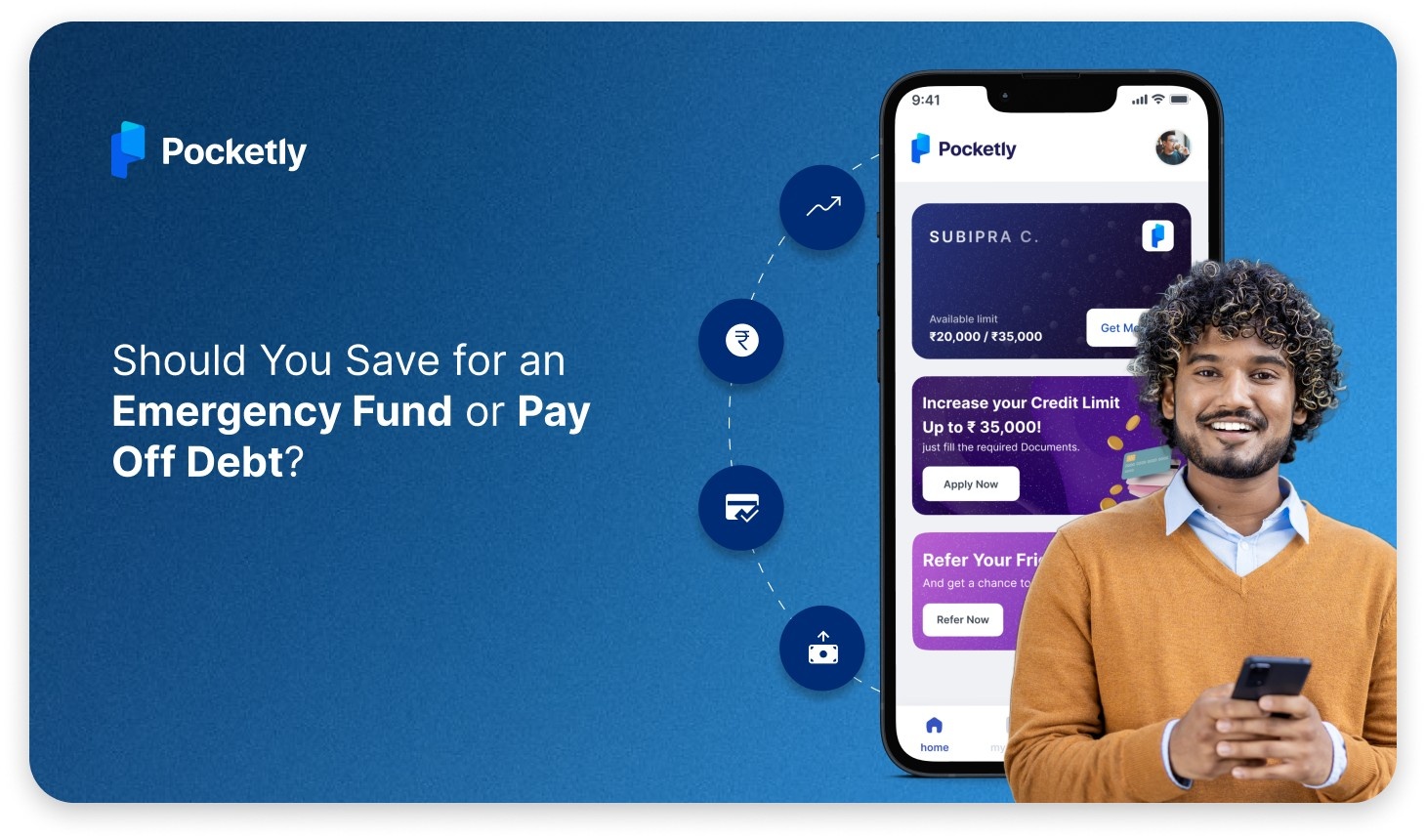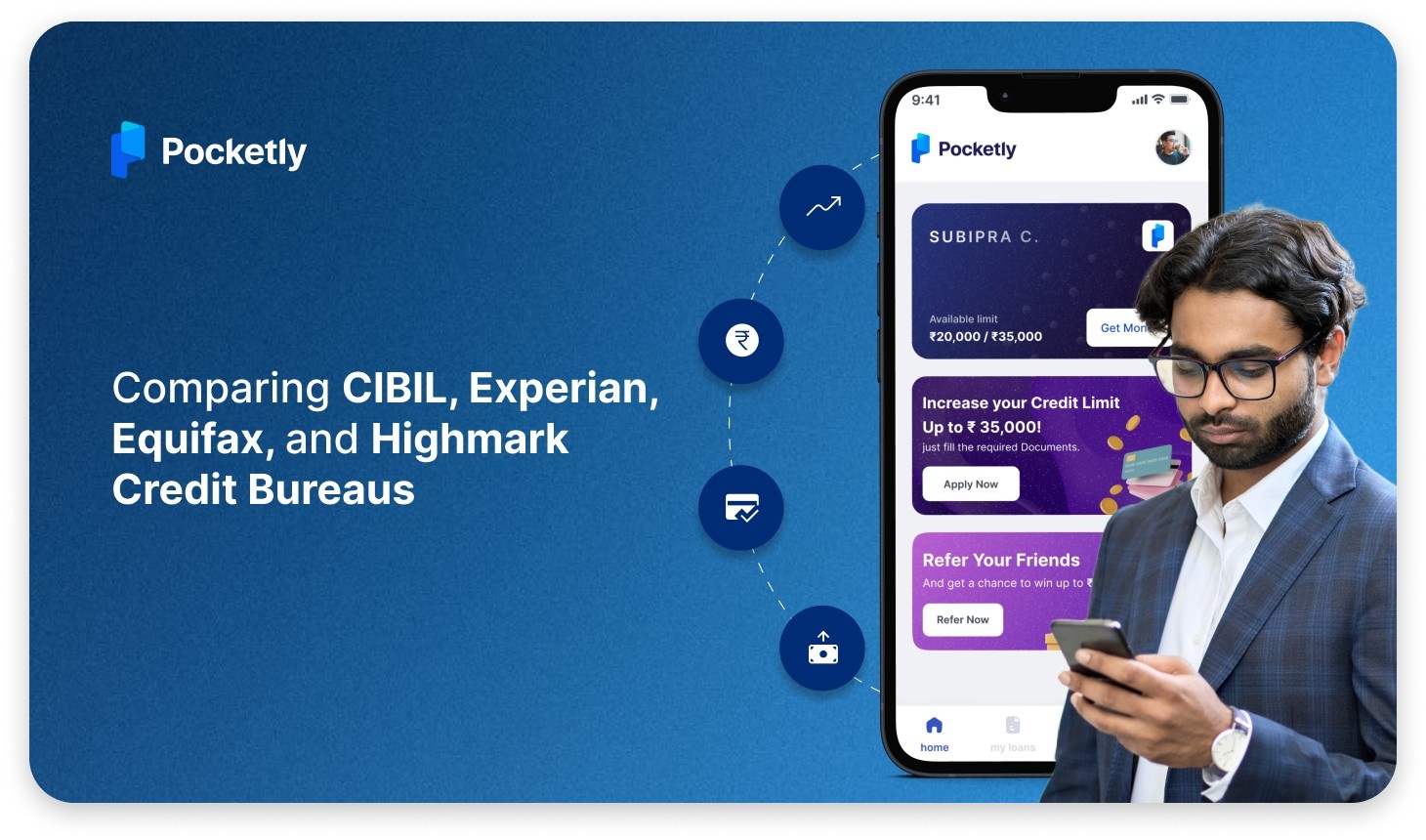
Don’t Fall for It: The Rise of Fake Loan Apps in India
With the rise of digital lending, getting a personal loan has never been quicker—or riskier. While many genuine apps offer instant credit with minimal paperwork, there’s a darker side to this convenience. Fake loan apps are on the rise, and they’re not just annoying; they can be dangerous.
To give you a sense of how widespread the problem is, Google removed over 2,200 fake loan apps from the Play Store between September 2022 and August 2023.
These apps often lure people with promises of instant money, zero paperwork, and low interest, but once you’re in, they hit you with hidden fees, misuse your data, and sometimes even resort to harassment.
If you’re searching for a personal loan, it’s more important than ever to know who you’re dealing with. In this blog, we’ll help you understand how fake loan apps operate, what red flags to watch for, and provide a list of fake loan companies you should avoid at all costs.
What Are Fake Loan Apps?
Fake loan apps are mobile applications or websites that pretend to offer legitimate loans, but operate without any regulatory approval, transparency, or consumer protection. Their goal isn’t to help you, it’s to exploit you. These apps often promise quick approvals, minimal paperwork, and easy money, but once you’re hooked, things can go wrong fast.
Most of them aren’t registered with the Reserve Bank of India (RBI) or backed by any certified financial institution. They’re designed to trick users into handing over personal details, paying upfront fees, or agreeing to shady loan terms they don’t fully understand.
Here’s what they typically do:
- Approve loans instantly without verifying your creditworthiness.
- Demand processing or convenience fees before releasing funds—sometimes without actually giving you a loan.
- Collect sensitive information like your contacts, photos, and messages by asking for excessive app permissions.
- Harass borrowers with threats, constant calls, and even public shaming if payments are delayed or refused.
In short, fake loan apps look like legit lending platforms on the surface but are really scams in disguise. And the worst part? Many people don’t realise they’ve fallen into a trap until it’s too late. That’s why knowing how to identify them is your first line of defence.
Common Characteristics of Fake Loan Apps
Fake loan apps may look polished on the surface—but a closer look reveals several red flags. These apps are designed to appear trustworthy while hiding the very details that would expose their fraudulent nature.
Here are some of the most common signs that you’re dealing with a fake loan app:
- No RBI registration or licence: Legitimate lenders in India must be registered with the Reserve Bank of India (RBI). If the app or company isn't listed on the RBI site, it's a major red flag.
- Unprofessional app or website design: Many fake apps have spelling errors, broken links, or poorly designed interfaces—often rushed to market with little attention to detail.
- Requests for high upfront fees: You might be asked to pay “processing” or “security” charges before receiving any loan. Real lenders usually deduct these charges from the loan amount, not ask you to pay in advance.
- No clear contact details or office address: Many fake apps hide behind vague or fake contact information, making it difficult to get in touch or verify their legitimacy.
- Unsolicited loan offers via SMS or WhatsApp: If you receive a random message offering you a loan with no application or eligibility check, it’s likely a scam.
- Vague or hidden loan terms: Details about interest rates, repayment timelines, and penalties are often missing or unclear, leaving you exposed to surprise fees and harsh conditions.
- Excessive app permissions: These apps often request access to your phone contacts, photos, files, and messages permissions which are unnecessary for loan processing and may be used for harassment later.
Spotting even one of these signs should raise suspicion. If you notice two or more? Don’t proceed, just delete the app immediately and look for safer, RBI-approved alternatives.
Impact of Fake Loan Apps
Falling victim to a fake loan app can do more than just cost you money. These scams can have a lasting impact on your mental well-being, digital safety, and financial future. The consequences are often immediate and overwhelming, especially for individuals already in financial stress.
Here are some of the most common impacts:
- Financial loss – Victims may lose money through fake processing fees, unauthorised charges, or fraudulent repayments.
- Emotional distress – Constant harassment, threats, and public shaming can lead to anxiety, fear, and mental health struggles.
- Damage to credit score – In some cases, scammers may report fake defaults or misuse your information, affecting your ability to get legitimate loans.
- Data privacy risks – Access to contacts, messages, and personal files can lead to identity theft or misuse of sensitive data.
- Loss of trust in digital lending – After being scammed, many people avoid all online loan services—even safe and regulated ones.
Let’s understand with an example:
A user came across a loan app on social media offering instant approval with minimal documentation. After paying a small processing fee, the promised loan was never credited. Instead, the individual began receiving repeated calls demanding repayment, followed by messages sent to their contacts falsely labelling them as a defaulter.
Takeaway: A seemingly harmless download can quickly turn into a distressing experience. Always verify the lender's legitimacy before sharing personal information or making any payments.
Steps to Identify Fake Loan Apps
Spotting a fake loan app before it causes damage is your best defence. Most of these apps follow similar patterns, and knowing what to look for can help you avoid scams altogether.
Here’s how to identify them:
- Check for RBI registration – Always verify if the lender is registered with the Reserve Bank of India on rbi.org.in.
- Read genuine app reviews – Don’t go by ratings alone. Scroll through 1-star reviews to spot real user complaints.
- Avoid apps asking for unnecessary permissions – A loan app doesn’t need access to your contacts, gallery, or messages.
- Never trust unsolicited loan offers – Be cautious if you get random WhatsApp or SMS messages offering instant loans.
- Verify contact details – Check if the app provides a working customer support number and physical office address.
- Look for clear loan terms – Genuine apps clearly state interest rates, repayment timelines, and processing fees upfront.
- Search the app’s name online – A quick Google search can often reveal if others have flagged it as fake.
- Be wary of upfront charges – Real lenders deduct processing fees from the loan amount, not before.
Following these steps takes just a few minutes but can save you from financial loss and emotional stress. When in doubt—don't proceed. Always prioritise your safety over speed.
Top Fake Loan Apps in India
While many fake loan apps are removed from app stores regularly, new ones often pop up under different names. These apps usually share common traits—no RBI registration, unclear terms, and aggressive recovery tactics. Some have already been flagged by users and authorities for fraudulent activity.
Here’s a list of notorious fake loan apps that you should strictly avoid:
| Fake Loan App Name | Reason to Avoid |
|---|---|
| Rapid Rupee | Reported for harassment and unauthorised access |
| CashBus | No RBI licence, unclear loan terms |
| Go Cash | Fake processing fees and misuse of contact data |
| Rupee Bazaar | Lacks transparency and customer support |
| SnapIt Loan | Unverified lender, flagged for public shaming |
| Easy Loan | No valid documentation or secure disbursal process |
| Dhana Dhan Loan | Harassment reported, app removed multiple times |
| CreditZilla | Misleading advertisements and aggressive recovery |
| Flash Loan | Fake approvals and threats to borrowers |
| Mera Loan | Unregulated and previously blacklisted |
| Quick Cash | Excessive app permissions and false claims |
| Rupee King | No physical office, no proper grievance redressal |
| Cash Tree | Demands upfront payments, no loan provided |
| CashLion | Sends legal threats through WhatsApp |
| Instant Loan Pro | Fake loan certificates, false interest rates |
Still unsure which loan apps are actually safe to use? Don’t worry—we’ve got you covered. Check out our guide on the Top 25 Best Personal Loan Apps in India 2025 to gain a clear picture of which platforms are genuine, trusted, and worth your attention.
Methods Used by Fake Loan Apps
Fake loan apps have become more sophisticated in recent years. They no longer rely on obvious scams—instead, they use psychological tricks, social engineering, and tech loopholes to appear trustworthy. These apps often target people in urgent need of funds, knowing they’re more likely to act quickly and skip the fine print.
Understanding the methods these apps use isn’t just helpful—it’s your first line of defence. The more familiar you are with their tactics, the easier it is to spot a scam before it gets too far.
Here’s how these apps work behind the scenes to lure and trap unsuspecting users:
1. Aggressive Social Media and Ad Targeting
- What it is: Flashy ads on platforms like Facebook, Instagram, and WhatsApp promoting “instant loans” or “5-minute approvals”.
- How it works: These ads are designed to catch your attention when you’re stressed or urgently need money, pushing you to download the app without checking credibility.
- What to watch out for: Ads with over-the-top claims, zero fine print, or links that redirect to shady websites. Always check the app name and reviews before clicking.
2. Fake Ratings and Reviews on App Stores
- What it is: Dozens or even hundreds of 5-star reviews praising the app’s speed and service.
- How it works: These are often fake reviews posted in bulk to drown out genuine complaints. The app appears trustworthy at first glance, but real users’ negative experiences are buried.
- What to watch out for: Look beyond the top ratings. Scroll down and read 1-star reviews for red flags like harassment, fraud, or payment issues.
3. No Credit Checks or Verification
- What it is: The app promises loans without checking your credit history, income, or ID.
- How it works: Fake apps skip formal verification to make borrowing look effortless. But once they have your info, they start charging fake fees or using your data against you.
- What to watch out for: Real lenders always verify your credentials. No documentation = no trust.
4. Unnecessary App Permissions
- What it is: The app asks for access to your contacts, camera, gallery, messages, and call logs.
- How it works: Once granted, they can misuse your data—contacting your friends or family if you miss a payment or even sending threatening messages.
- What to watch out for: Never allow a loan app to access personal files or your contact list. If it asks for more than basic KYC permissions, avoid it.
5. Upfront Processing or Security Fees
- What it is: The app asks you to pay a processing fee, GST, or “release charge” before sending you the loan.
- How it works: Once paid, the app may stall the disbursal, ask for more money, or disappear altogether.
- What to watch out for: Legitimate lenders deduct fees from the sanctioned loan amount. Never pay anything in advance.
Harassment Tactics by Fake Loan Apps
Fake loan apps don’t stop at tricking you into borrowing; they often resort to aggressive and unethical methods to recover money, even if you’ve paid or never received a proper loan. Many users have reported cases where harassment began just hours after signing up. These tactics can feel invasive, humiliating, and mentally exhausting.
Here’s how it typically unfolds:
1. Relentless Calling and Messaging
Once you’ve signed up, these apps may start bombarding you with phone calls—sometimes from multiple numbers or international codes. The calls can come at all hours of the day, often laced with aggressive language, threats, or demands for immediate payment.
2. Harassing Friends and Family
Because many fake apps ask for access to your contact list, they misuse that information to send messages to people you know. They may claim you’ve defaulted, use abusive language, or pressure your contacts into convincing you to pay—even if the loan wasn’t legitimate to begin with.
3. Threats with Personal Photos or Data
Some apps request permission to access your gallery or camera under the guise of identity verification. Later, they misuse these images to threaten you, claiming they’ll post them online or send them to your contacts with fake captions unless you repay them.
4. Fake Legal Notices and Police Threats
To scare you, they might send WhatsApp messages or emails posing as legal documents, claiming that a court case or FIR has been filed against you. These are often written poorly, with fake legal terms and no real authority behind them.
5. Public Humiliation Tactics
In extreme cases, users have found fake social media accounts created in their names or posts designed to defame them publicly. This is meant to pressure you into paying through shame and social fear, not legal recourse.
Knowing how these apps work helps you stay safe and protect others. Stay cautious and always verify before you act. Awareness is your strongest defence.
While understanding all this, one of the biggest concerns during a financial crunch is knowing which digital lending platform to trust. With so many apps out there, choosing the right one can be overwhelming. That’s where Pocketly steps in—to make borrowing simple, secure, and stress-free.
Is Pocketly Real? Here's How You Can Tell
1. Instant Approvals
Apply in just 2 minutes and get approval notifications instantly. We prioritise speed because your needs can’t wait.
2. Minimal Documentation
Forget lengthy paperwork. With Pocketly, you only need a government ID and basic KYC. Upload them online in seconds—it’s that easy!
3. Flexible Repayments
Whether you prefer small EMIs or quick payoffs, you’re in control of your repayment terms. Pocketly adapts to your budget and schedule.
4. No Collateral Required
Keep your assets safe. Pocketly provides unsecured loans, so there’s no need to risk your property or savings.
5. Transparent Costs, No Hidden Charges
What you see is what you get. Pocketly ensures complete transparency in interest rates, fees, and repayment schedules—no surprises, ever.
6. Build Your Credit Score
Start small, grow big. Timely repayments help you build or improve your credit score, opening doors to better financial opportunities.
7. Financial Education Resources
Pocketly helps you make better financial decisions with tools and tips to improve your money management skills.
8. 24/7 Support
We’re here for you anytime, anywhere. Whether it’s a question or assistance, our support team is always just a click away.
9. Safe and Secure
Your personal and financial data are protected with advanced encryption, ensuring complete safety and privacy.
With Pocketly, you get fast solutions, complete transparency, and peace of mind—all at your fingertips.
Conclusion
In today’s fast-paced digital world, getting access to money is easier than ever, but that convenience comes with a catch. Fake loan apps are lurking in plain sight, preying on those who need help the most. They might promise you instant cash, but what they really deliver is stress, harassment, and financial loss.
With the right knowledge, a sharp eye for red flags, and a commitment to only borrowing from trusted sources, you can stay miles away from these scams. Always check for RBI registration, read real reviews, avoid apps asking for upfront payments or personal permissions, and trust your gut; if it feels shady, it probably is.
And when you do need a genuine, fast, and secure loan option, choose a platform that puts your safety and peace of mind first, like Pocketly. Built with transparency, ease, and user safety in mind, Pocketly gives you the financial support you need, without the risks you don’t.
So borrow smart, borrow safe and keep your financial future in your control, not in the hands of fraudsters.
FAQs
How can I check if a loan app is fake or real?
Always verify if the lender is registered with the RBI, check app reviews (especially the 1-star ones), and ensure the app doesn’t ask for excessive permissions like full access to your contacts or gallery.
What should I do if I’ve been scammed by a fake loan app?
Report the app immediately at cybercrime.gov.in, inform your bank, revoke app permissions, and uninstall the app. Try to contact a legal advisor if the harassment continues.
Are all loan apps on the Play Store safe to use?
Not necessarily. Even though the Play Store has strict policies, some fake apps still slip through. Always do your own checks before downloading or applying for a loan.
Why do fake loan apps ask for contact access?
They misuse your contact list to harass or shame you by sending threatening messages to friends and family. A genuine loan app will never need this kind of access.
How quickly can I get a loan with Pocketly?
Pocketly offers instant approvals, and once your loan is approved, the funds will be get into your bank account within minutes.
What documents do I need to apply for a loan?
Pocketly requires minimal documentation. You’ll need to provide basic KYC information like your PAN card, Aadhaar card, and bank statement, all of which can be uploaded digitally.
















